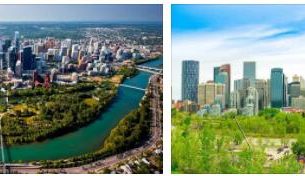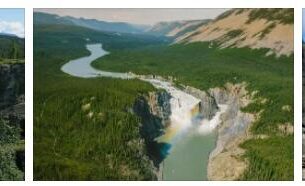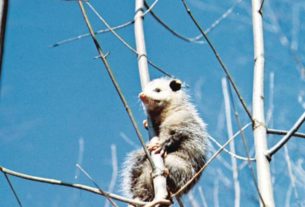The Canadian Rocky Mountains are among the most beautiful and impressive mountain landscapes in the world. Five national parks and more than 60 provincial parks protect the natural beauty and unique wildlife. Banff National Park, Canada’s oldest national park (1885), and Jasper National Park are outstanding.
Canadian Rockies: Facts
| Official title: | National and Provincial Parks in the Canadian Rockies |
| Natural monument: | National parks Banff (since 1885), Jasper (since 1907), Kootenay (since 1920) and Yoho (since 1920) as well as Mount Robson, Mount Assiniboine and Hamber Provincial Parks, also the Burgess Shale fossil deposit discovered in 1909 at Mt. Field; Total area of 23,068.84 km²; Heights of up to 3954 m (Mount Robson) |
| Continent: | America |
| Country: | Canada |
| Location: | along the British Columbia-Alberta border; Mount Robson Provincial Park and Hamber Provincial Park west and southwest of Jasper National Park, respectively, and Mount Assiniboine Provincial Park between Banff and Kootenay National Parks |
| Appointment: | 1984, expanded in 1990 |
| Meaning: | one of the world’s most impressive mountain landscapes |
| Flora and fauna: | montane, subalpine and alpine flora such as gray spruce, twist pine, Engelmann’s spruce, Lyall’s larch, American quivering and balsam poplar; 56 species of mammals such as elk, caribou, bighorn sheep, grizzly bear, baribal, Canadian lynx, puma, gray wolf, wolverine; Over 260 species of birds such as the three-toed woodpecker, water pipit, rock tit, golden eagle, Canadian blue jay; also 3 frog, one salamander and 2 snake species |
Where bear and beaver say goodnight
Major “Hell’s Bells” Rogers had no eye for the majestic beauty of the landscape. The railway pioneer was looking for a suitable route through the mountains in 1881, and for him the Rocky Mountains were simply a gigantic traffic obstacle for the first Canadian rail link from the Atlantic to the Pacific. Politically, too, there was a lot at stake for the country that had just gained independence: If Rogers had failed, according to programingplease, Canada’s western Pacific province of British Columbia would now probably be a state of the United States.
But where there is a will, there is a way: in 1883 the Canadian Pacific Railway reached Lake Louise and shortly afterwards the continent’s watershed, the 1,625 meter high Kicking Horse Pass, where two famous spiral tunnels still bear witness to a technical masterpiece . The wild mountains – until the late 19th century only sketchily mapped and practically undeveloped – became accessible to everyone in one fell swoop.
The railway company itself ensured that well-off travelers in the wilderness of the Rocky Mountains could enjoy all the amenities they were used to from the metropolises. As early as the end of the 19th century, she built the Banff Springs Hotel next to a 47 degree hot spring and the world-famous “Château Lake Louise” hotel immediately east of the Kicking Horse Pass.
After this successful development of the mountain wilderness, more and more mountaineers came who gave the mostly heavily glaciated peaks their names in the first place. In 1913, Conrad Kain, born in Austria, was the first person to stand on the highest mountain in the Canadian Rockies, Mount Robson, 3954 meters high: »You could compare the surrounding glaciers and mountains with a sea whipped up by a storm (…). Unfortunately, we were only allowed to stay on the summit for 15 minutes: ten minutes of pleasure and five minutes of chattering teeth. Our ropes and wet clothes were frozen and hard as stone (…), ”noted Cain for the“ Canadian Alpine Journal ”. The most famous and beautiful mountains include the 2766 meter high Castle Mountain, which towers like a castle, and the 3464 meter high Mount Victoria.
The Canadian government recognized early on that the sensitive ecosystem with its glaciers, its high-alpine flora and its bears and beavers, moose and caribou, pumas and wolves needed special protection. Gradually, extensive areas on the eastern main range of the Rocky Mountains were designated as national parks. Together, the national parks Jasper, Banff, Yoho and Kootenay are slightly larger than Hessen, and nobody is allowed to buy land or build a house here – with the exception of the cities of Jasper, Banff and Field.
If you want to stay overnight outside the city limits, you should have a tent and a warm sleeping bag with you or be out in a mobile home. On the campsites of the national parks you usually not only have to do without electricity and running water, but also expect night frost in summer. In return, vacationers from all over the world learn how to light a campfire and prepare coffee or dinner on it.
However, the rush of tourists during the short summer season, especially at Lake Louise and on the spectacular Icefields Parkway between Jasper and Banff, causes a considerable crowd. You can literally “experience” the largest glacier in the Canadian Rockies, the Columbia Ice Field, in special buses.
But apart from these main attractions, which are approached by all coaches and most holidaymakers in mobile homes, hikers, mountaineers, skiers, mountain bikers and nature lovers will find countless turquoise shimmering mountain lakes, impressive waterfalls, rapid rapids and a number of lesser-known glaciers – untamed wilderness without any tourist crowds.




